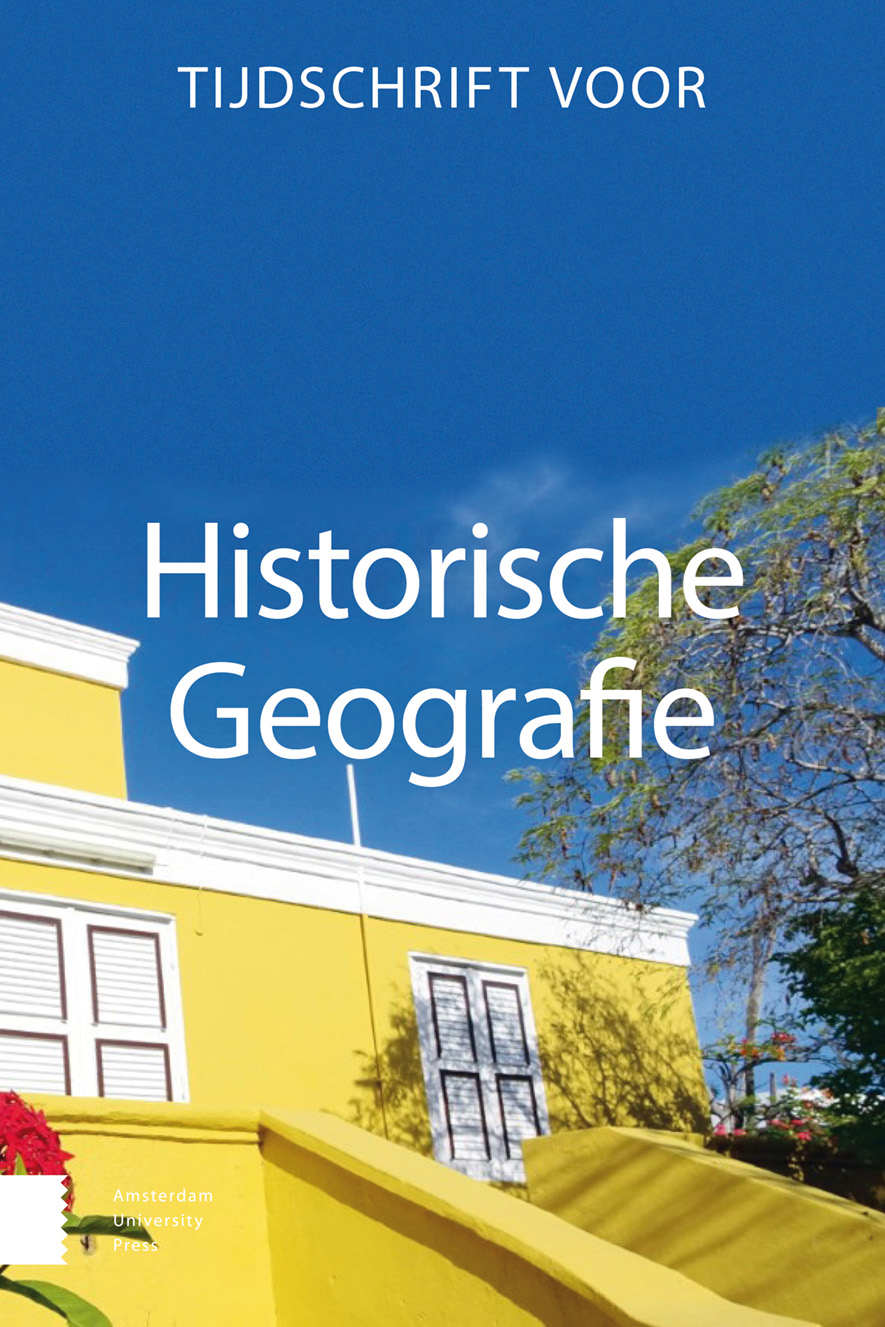- Home
- A-Z Publications
- Tijdschrift voor Historische Geografie
- Previous Issues
- Volume 6, Issue 4, 2021
Tijdschrift voor Historische Geografie - Volume 6, Issue 4, 2021
Volume 6, Issue 4, 2021
-
-
Het station als historisch gelaagd landschap: continuïteit of trendbreuk?
More LessAuthor: Arjen ZomerAbstractThe railway station as a historically layered landscape: continuity or trend break?
During the 21st century, many major railway stations in the Netherlands were redeveloped. The national railway company (ns) claims to have found a method of redevelopment. The aim of this method is to create a recognizable identity for railway stations. The cultural history of railway station landscapes seems to have been largely neglected in many cases. Two of these major redevelopment projects are the railway stations of Zwolle and Tilburg. The redevelopment of the Zwolle station is a good example of how designers can approach the identity of a railway station by identifying the cultural history and many layers of the railway landscape. In Tilburg, on the other hand, the cultural history of the station is not taken into account in the redevelopment. This article aims to make clear that by using the method of ‘landscape biography’, the many layers of historical station landscapes can be used in redevelopment projects to create recognizable identities.
-
-
-
De trein komt. Spoorwegen, landgoederen en hun eigenaren (1832-1914)
More LessAuthor: Frans KrabbendamAbstractThe train is coming. Railways, estates and their owners (1832-1914)
After several decades of private initiatives, the Dutch government took more control of the construction of railways from the 1860s. The north and east of the Netherlands became accessible with these State lines. The first route, between Arnhem and Zutphen, was opened in 1865. The necessary land was acquired amicably or expropriated. The location of estates was usually not an important factor in the choice of railway routes. They were therefore regularly cut through. Each estate owner had his own opinion on the railway construction and personal motives determined whether a cooperative or militant attitude was taken. The construction of railways affected the daily life of the estate owners and led to legal, economic and spatial changes. But above all, the railways marked the transition to a new era.
-
-
-
Wat betekent ‘rabat’ en sinds wanneer leggen we bossen op rabatten?
More LessAuthors: Adri Mulder & Lauran TooriansAbstractWhat is the meaning of ‘rabat’ and since when were forests planted on rabatten?
‘Rabatten’ (singular ‘rabat’) are elongated and rather narrow ridges between ditches. The soil from the ditches is used to raise the ‘rabat’. The method is used in forestry to obtain dry strips on which the trees are planted. The ditches are used for drainage and soil improvement seems to have played a role as well. The phenomenon occurs in many forested areas in the Netherlands, especially on the sandy soils in the South and East of the country. The earliest references to ‘rabatten’ in forestry date from the 18th century but early sources in which the phenomenon is explicitly mentioned are rare. In this article, we trace the history, meaning and use of the word ‘rabat’ as well as the history of these objects in forestry in the Netherlands. It appears that the word was first used with the meaning ‘plant bed, border’ in formal gardens. Dated examples of ‘rabatten’ in forestry which can be located date from the late 19th century but in a few rare instances it can be shown that actual ‘rabatten’ must date from before 1750. Thus, the phenomenon is certainly older than the use of the word with this specific meaning. It becomes clear that de semantic development of the word is exclusively Dutch and that the use of the word in forestry only took off since the second half of the 19th century.
-
-
-
Een getekende kaart van De Beer
More LessAuthors: Frans Beekman & Ed BuijsmanAbstractA drawn map of the island De Beer
A century ago nature reserve De Beer was situated opposite Hoek van Holland. The young (and later famous) Niko Tinbergen wrote a book in 1930 about this ‘bird island’. His younger friend Jan Joost ter Pelkwijk made a kind of mental map of De Beer in 1932 with more than 80 sketches on it. This map is compared with the 1938 topographical map.
-
Most Read This Month


